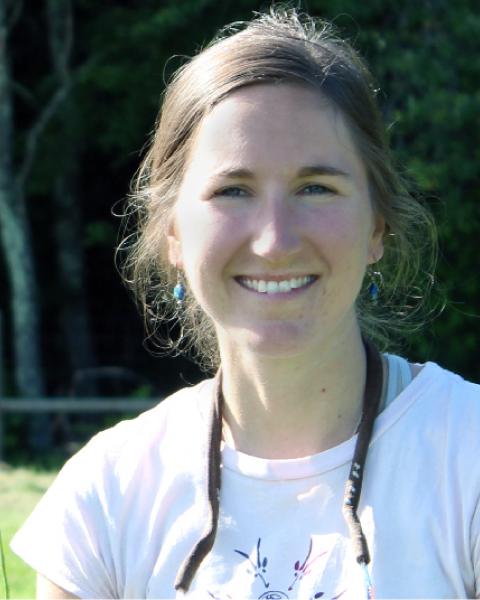The following guide is to be used when considering employing pollination services on your farm. Growers and beekeepers will need to tailor the specifics of a pollination contract to the particulars of their business and needs. Clear communication at the start will help aid in a profitable relationship for both parties.
Strength of Colony
Upon delivery, ask the beekeeper to show you the inside of the hive, after you don a protective veil. The colony should be teeming with bees. Each frame should be covered in hundreds of bees. A colony with a small cluster of bees on only a few frames will not be of value to you in pollination. Two colonies of 15,000 bees will be less effective than one colony with 30,000 bees.
- Colony should be housed in at least a two-story, 8 or 10 frame hive
- Contain at least 20,000-30,000 bees (approximately 6-9 lbs of bees)
- Should have 4-8 full frames of brood in all stages of development
- Should have a queen and colony free of diseases
- No nucleus colonies should be use for pollination (a 5 frame colony)
Number of colonies to use
Many factors can influence the number of colonies needed for pollination. The following are meant to be used only as a guide, as other considerations may influence the stocking rate of bees on your farm. Make an assessment of your property for native pollinators already in the area. Determine your yield goals or fruit-set for your crop. Assess the amount of flowering plants present during your crops bloom period. Consider weather conditions during bloom.
- Low bush blueberries
- Fields surrounded by fields – 2-3 colonies/acre
- Fields surrounded by woods – 2 colonies/acre
- High bush blueberries – 0.5-5 colony/acre – stocking rate should be determined by bloom density. Established orchards with large plants will need more bees than a newly established orchard with low bloom density. Cultivars like Jersey and Earliblue require more pollinators than Blueray or Bluecrop due to the attractiveness of the flower.
- Apples – 2 colonies/acre
- Raspberries, strawberries – 1 colony/acre
- Vine crops – 1-2 colony/acre
- Cranberries – 1-2 colonies/acre, up to 5 in poor weather conditions
Distribution of Colonies
- Can be placed in groups (usually on pallet) 500 feet apart.
-
Where 1 colony/acre is used, can have 4-6 colonies in a group (not a straight line), 150-300 yards apart.
-
Where 2 colonies/acre are used, up to 12 colonies in a group.
-
Site in full sun, with optimal air and water drainage. A windbreak can be helpful.
-
A source of clean water is necessary for the bees.
-
Hives should be oriented south for early morning sun.
-
Avoid low spots, as cool damp air can accumulate there.
Delivery of colonies
- Normally delivered when 2-10% of the blossoms of the crop are open. The beekeeper is responsible for delivery and loading/unloading of hives.
- Beekeepers will move their colonies at night, when all the bees are inside. Growers should assist in the delivery of the colonies since this is done in darkness, with poor visibility. The beekeeper may be unfamiliar with your grounds and layout. Clearly mark where you want the colonies placed in the field.
Swarming
Do not try to catch the swarm yourself. Swarms may relocate multiple times before deciding on a permanent home, the sooner the beekeeper can get to your location the more likely they will have success in re-hiving the bees.
Feeding
It is likely that the beekeeper may need to feed the bees sugar water. The beekeeper should not use an open feeding technique, which encourages robbing and could create frenzy of bees. Feeders should all be inside the hive.
- Familiarize yourself with pesticides which are highly toxic to bees, and when possible choose an alternative. A “Bee Precaution Pesticide Ratings” tool has been developed for growers here: https://www2.ipm.ucanr.edu/beeprecaution/
- Take actions to reduce pesticide drift, such as calibrating or updating sprayer equipment. Use weather forecasting models and other integrated pest management methods to avoid unnecessary applications of pesticide.
- Spray in the evening or at night whenever possible.• Inform the beekeeper of when you plan to spray so they have time to close the hive up during this period.• If a colony dies on the site, the beekeeper can notify the State Bee Inspector at the NH Department of Agriculture Markets and Food. The bee inspector will make a final determination as to the cause of the loss. If a pesticide agent is found in the sample of bees, the beekeeper and grower should refer to the terms of their pollination contract regarding what the beekeeper will do and what the grower will do.
- Consider adding a pollinator habitat block to your farm to allow for continuous supply of nectar and honey, in an area free from pesticide applications. This will also help native bee populations.
Bee Stings
If you or your crew is stung by a bee, the stinger should be removed. Do not pinch the stinger to remove it, as this will push more venom out of the sac. Instead, push the stinger out with your thumb nail, a credit card also works well. Localized swelling is normal. If other areas of the body begin to swell, seek medical attention.
Finding a Beekeeper
Beekeepers are networked thru state and local clubs. Find a local club to identify beekeepers in your area who may be interested in pollination. Visit https://www.nh-honeybee-health.com/nh-clubs-1 to find an organization.
